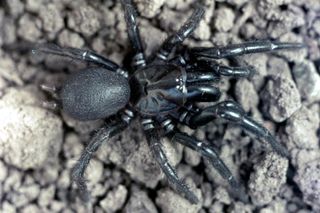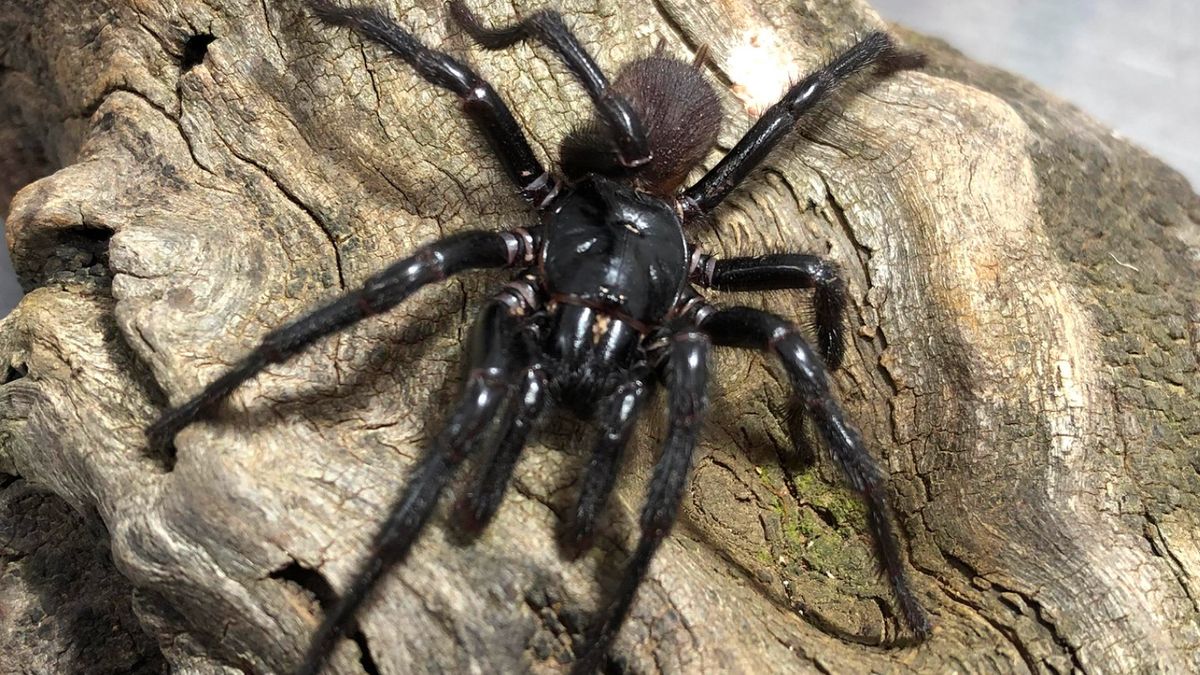One of Australia’s biggest and deadliest spiders is actually three different species, researchers discover — and one of these behemoth arachnids is even bigger than the rest.
Sydney funnel-web spiders (Atrax robustus) are glossy black in color and grow to 1.5 inches (3.8 centimeters) long. The iconic arachnids are also among the most venomous spiders to humans.
Called funnel-web spiders after their long, narrow, silk-lined burrows these spiders can live in suburban areas and wander into houses during the summer when males leave the burrow to search for mates. Their venom contains a toxin that attacks the human nervous system, so bites need immediate medical attention — otherwise, a victim can die within 15 minutes.
The Sydney funnel-web spider was first described in 1877. Since then, scientists have developed a better understanding of funnel-web spiders and how they are related, describing more types of funnel-web spiders throughout Australia.
Related: What is the deadliest spider in the world?
Now, scientists have untangled how these species are related by collecting wild spiders throughout the Sydney suburbs and analyzing specimens from Sydney’s Australian Museum, which has the largest collection of funnel-web spiders in the world. The scientists closely observed the specimens under a microscope and analyzed their genetics.
This revealed that the Sydney funnel-web spider is actually three species. The study was published Jan. 13 in the journal BMC Ecology and Evolution.
The “real” Sydney funnel-web spider (the creature originally described in 1877 as Atrax robustus) is found throughout the city and suburbs of Sydney. A second related species is Atrax montanus, which was first described about 100 years ago and then discarded as inaccurate, until the new research found it does exist. It mostly lives further south and west in rainforests. And a third, larger species, Atrax christenseni, can be found in a small region surrounding the city of Newcastle, around 105 miles (170km) to the north of Sydney.

Atrax christenseni was named for Kane Christensen, former head of spiders at the Australian Reptile Park, who first described it in the early 2000s and gave the spiders the nickname “big boys.” These funnel-web spiders are the largest of the three species, growing up to 3.5 inches (9 cm) long.
Danilo Harms, co-author of the study and an arachnologist at the University of Göttingen in Germany, told Live Science his team was the first to systematically define these species’ relationships. “You would think that a spider like that had been studied to death… because it’s so relevant. There’s practical relevance because people get bitten each year,” Harms said. “Finding that very little had been done, looking into the very basic stuff you’d want to know, was surprising.”
The first antivenom for funnel-web spiders was developed in 1981, and there have been no recorded deaths from these spiders since then. But confusion about the three species may mean that antivenoms are less effective than they could be.
Funnel-web spiders are not aggressive by nature but can attack when cornered, so it’s a good idea for people to be mindful when they see one, Harms said. But in case of bites, investigating how these species differ, and how the structure of their venoms differs, can improve the specificity of antivenoms. For example, these species might have different levels of specific compounds in their venom that paralyze humans, which can help researchers tailor antivenoms to each species.


